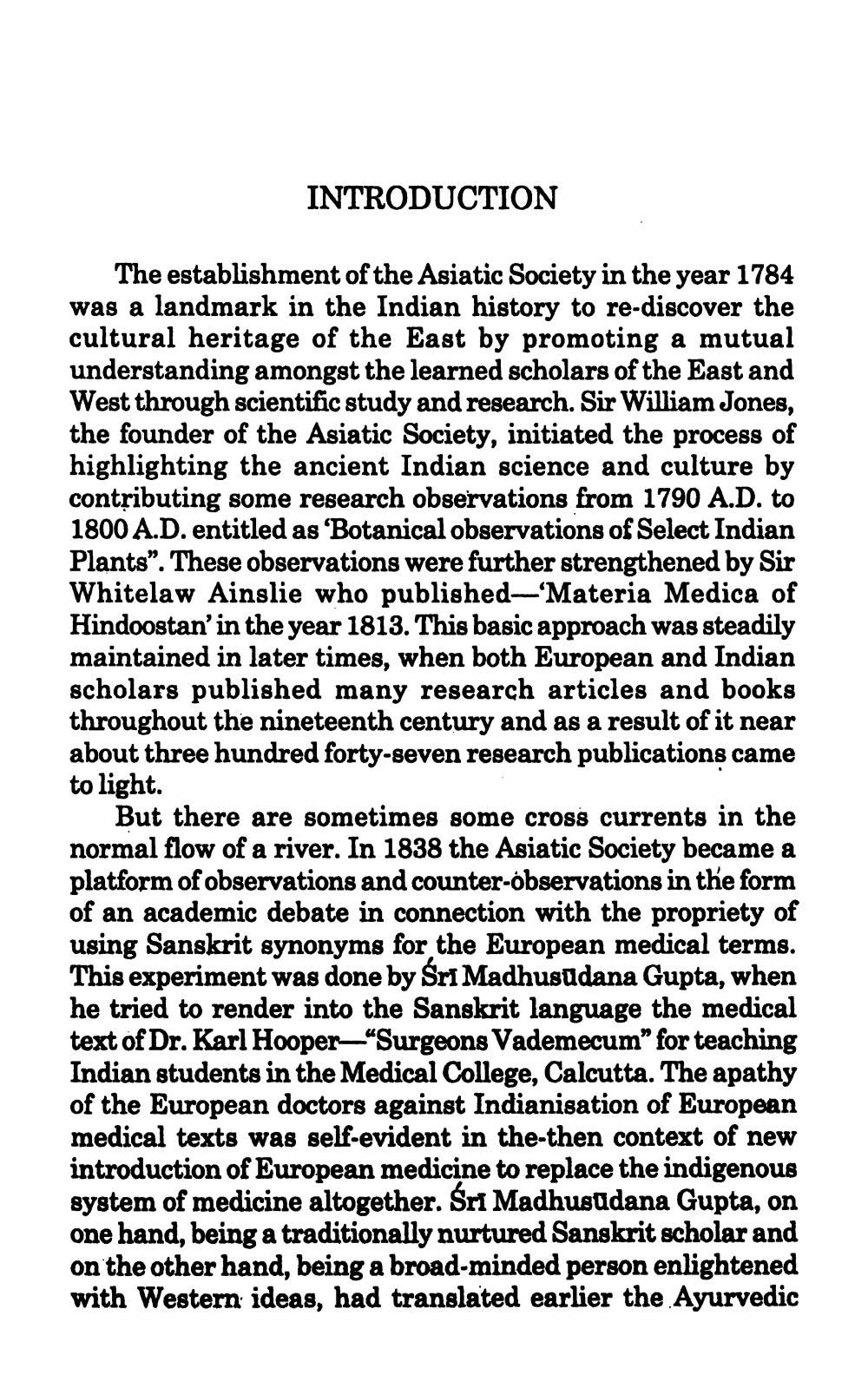________________
INTRODUCTION
The establishment of the Asiatic Society in the year 1784 was a landmark in the Indian history to re-discover the cultural heritage of the East by promoting a mutual understanding amongst the learned scholars of the East and West through scientific study and research. Sir William Jones, the founder of the Asiatic Society, initiated the process of highlighting the ancient Indian science and culture by contributing some research observations from 1790 A.D. to 1800 A.D. entitled as 'Botanical observations of Select Indian Plants". These observations were further strengthened by Sir Whitelaw Ainslie who published-Materia Medica of Hindoostan' in the year 1813. This basic approach was steadily maintained in later times, when both European and Indian scholars published many research articles and books throughout the nineteenth century and as a result of it near about three hundred forty-seven research publications came to light.
But there are sometimes some cross currents in the normal flow of a river. In 1838 the Asiatic Society became a platform of observations and counter-observations in the form of an academic debate in connection with the propriety of using Sanskrit synonyms for the European medical terms. This experiment was done by Sri Madhusudana Gupta, when he tried to render into the Sanskrit language the medical text of Dr. Karl Hooper—“Surgeons Vademecum” for teaching Indian students in the Medical College, Calcutta. The apathy of the European doctors against Indianisation of European medical texts was self-evident in the-then context of new introduction of European medicine to replace the indigenous system of medicine altogether. Sri Madhusudana Gupta, on one hand, being a traditionally nurtured Sanskrit scholar and on the other hand, being a broad-minded person enlightened with Western ideas, had translated earlier the Ayurvedic




